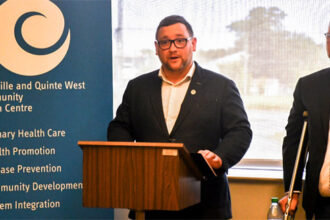In a controversial development that has sparked heated debate across the healthcare sector, a recent analysis suggests Ontario is systematically redirecting millions of dollars from public health initiatives to fund private healthcare facilities. The findings, released yesterday by the Ontario Health Coalition, paint a troubling picture of resource allocation in the province’s already strained healthcare system.
“What we’re witnessing is essentially a cannibalization of public health resources,” explains Dr. Eleanor Winters, health policy expert at the University of Toronto. “At a time when our emergency rooms are overwhelmed and staff shortages plague hospitals, diverting funds to for-profit clinics raises serious questions about healthcare priorities.”
The report details how approximately $875 million originally earmarked for public health infrastructure improvements has been gradually reallocated toward privately-operated surgical and diagnostic clinics over the past 18 months. This shift represents a significant departure from Ontario’s traditional healthcare funding model and comes amid growing concerns about wait times and resource scarcity in the public system.
Ministry of Health officials have defended the reallocation, arguing that private clinics help reduce surgical backlogs and provide specialized services more efficiently. “Our goal is delivering timely, quality care to Ontarians through all available channels,” stated Health Minister Sylvia Jones in a written response to the findings. “These partnerships complement our robust public system.”
However, critics, including the Ontario Nurses Association, counter that the funding shift undermines the foundational principles of universal healthcare. “Every dollar diverted to profit-driven facilities is a dollar not spent strengthening our public institutions,” notes Marie Thompson, ONA President. “The solution to our healthcare challenges isn’t privatization—it’s proper investment in the public system we’ve built over generations.”
The controversy extends beyond just financial concerns. Healthcare professionals have raised alarms about potential inequities in service delivery, with patients in rural or underserved communities potentially facing greater barriers to accessing privately operated facilities that tend to cluster in urban centers.
Perhaps most concerning is the timing of these funding shifts. They coincide with record-high emergency room wait times and unprecedented healthcare worker burnout rates across the province. Several public hospitals have reported difficulty maintaining essential services due to budget constraints—the very constraints that appear less applicable to private sector initiatives.
Public health advocates are calling for greater transparency in healthcare funding decisions and a renewed commitment to strengthening public infrastructure. “Once we start dismantling our public health framework, it becomes increasingly difficult to rebuild,” warns Dr. Winters. “The long-term consequences could profoundly reshape healthcare accessibility for generations.”
As Ontario grapples with post-pandemic healthcare recovery and an aging population with increasingly complex needs, a fundamental question emerges: can a system that diverts resources from public institutions to private enterprises truly deliver equitable, universal healthcare to all Ontarians?










